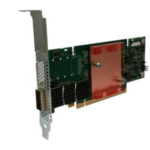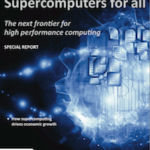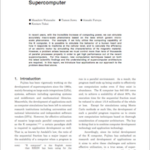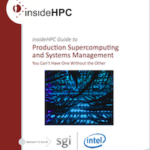The Intel Omni-Path Architecture is the next-generation fabric for high-performance computing. In this feature, we will explore Intel’s end-to-end fabric solution designed for HPC and Enterprise. “Intel Omni-Path Architecture immerses Intel in an entire fabric architecture for HPC, rather than just a single component.”
Intel Omni-Path Architecture: End-to-End Fabric Solution Designed for HPC and Enterprise
Intel Omni-Path Architecture: A Focus on Application Performance
The Intel Omni-Path Architecture is the next-generation fabric for high-performance computing. In this feature, we will explore what makes a great HPC fabric and the workings behind Intel Omni-Path Architecture. “What makes a great HPC fabric? Focusing on improving and enhancing application performance with fast throughput and low latency.”
Intel Omni-Path Architecture: What’s a Supercomputer App Want?
The Intel Omni-Path Architecture is the next-generation fabric for high-performance computing. In this feature, we will focus on what it takes for for supercomputer application to scale well by taking full advantage of processor features. “To keep these apps working at their peak means not letting them starve for the next bit or byte or calculated result—for whatever reason.”
Supercomputers for All
Supercomputers may date back to the 1960s, but it is only recently that their vast processing power has begun to be harnessed by industry and commerce, to design safer cars, build quieter aeroplanes, speed up drug discovery, and subdue the volatility of the financial markets. The need for powerful computers is growing, says Catherine Rivière […]
Research for New Technology Using Supercomputers
This paper presents our approach to research and development in relation to four applications in which utilization of simulations in super-large-scale computation systems is expected to serve useful purposes.
Supercomputers Production and System Management
With High Performance Computing (HPC) supercomputer systems that comprise tens, hundreds, or even thousands of computing cores, users are able to increase application performance and accelerate their workflows to realize dramatic productivity improvements. The performance potential often comes at the cost of complexity. By their very nature, supercomputers comprise a great number of components, both hardware and software, that must be installed, configured, tuned, and monitored to maintain maximum efficiency. In a recent report, IDC lists downtime and latency as two of the most important problems faced by data center managers.









